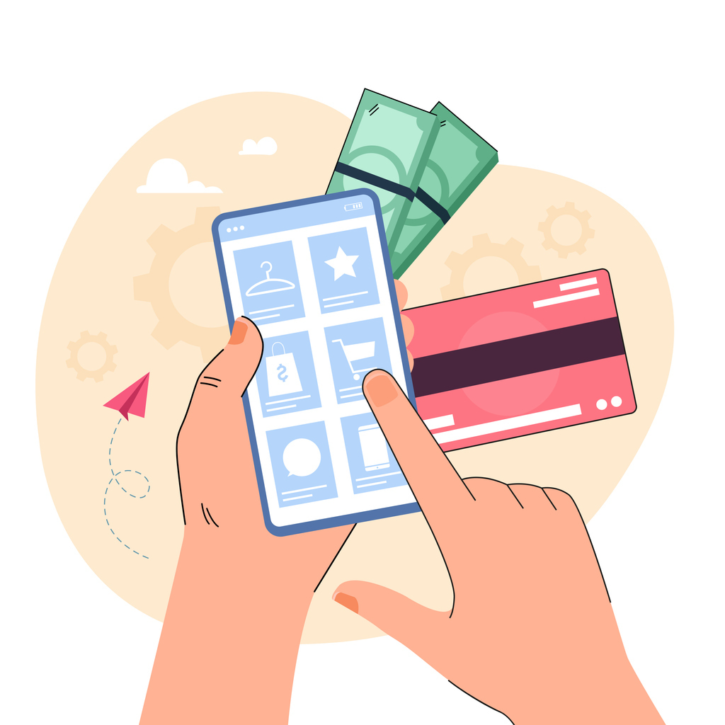The golden rules for a successful e-tail product launch in 2025
The big day has arrived! It’s a wrap; the research, sampling, testing, and product design are done and dusted. It’s now behind you, and you’re finally ready to launch your e-tail product.
But it’s not all plain sailing — it’s crunch time with no room for error. One tiny slip-up, and despite your hard work, your new product will go unnoticed.
You’ll need to develop a solid launch strategy for your e-tail product. So, we’re glad you landed here! This guide will take you through all the steps to ensure a successful e-tail product launch.
What is an e-tail product launch strategy?
A successful e-tail product launch strategy aims to introduce a new product to a market and make it known to as many people as possible.
📌 Example: a mobile phone case supplier wants to market their new range of bamboo cases. They’ll need a tailored launch strategy that does justice to their innovative collection.
However, despite what some may think, a product launch strategy is not just about what happens on the big day. It should encompass and streamline all aspects of the launch so that each team member knows what to do and when.
This is crucial, particularly considering that, according to a Hostinger study, e-tail sales could reach 23% of all global retail sales by 2027. Your e-tail product launch strategies must be finely tuned to beat the competition in today’s increasingly fierce market.
So, we’ve compiled 7 key steps to integrate into your strategy.
Steps for a successful e-tail product launch
1. Carry out an in-depth analysis of the competition
Before addressing the “how’s” of launching an e-tail product, you need to have a clear idea of the why’s”. And understanding the competition is a vital step.
You need to find out:
- What your competitors’ marketing strategies are
- Which ones work best?
- What are your competitors’ weaknesses?
- How can you turn their weaknesses into your strengths?
- Have these companies received positive feedback on their campaigns?
A competitive analysis helps identify your competitors’ strengths, weaknesses, products, marketing strategies and business models. It will provide tips on the best practices to action and highlight mistakes made by e-tailers so you don’t fall into the same trap.
You can even go one step further by studying your competitors’ social media presence, pricing, and customer loyalty strategies.
2. Understand your target audience’s needs
The product you’re launching today won’t necessarily have the same target audience as the one you launched last month.
📌 Example: The company “Mes Beaux Bureaux” launched a standing desk in February 2025. It targeted customers who work from home and could do with a posture-soothing, ergonomic desk. The following month, the company launched a bench for four people with companies as their main target. They tailored their e-tail product launch strategy and USPs to this new audience.
Here are the questions you need to ask yourself at this stage:
- Does your product resolve a problem faced by your target audience?
- Is your target audience aware of the usefulness of your new product?
- How does your product differ from competitors’ products? In other words, what makes it unique?
- Is the price of your product aligned with the purchasing power of your target audience?
3. Define your product’s price and its distribution strategy
Pricing strategy
When setting the price of your brand-new product, you should factor in your targets’ budget, your costs, added value, supply and demand and your goals. To do so, we highly recommend you compile a comprehensive financial forecast. After all, it would be a real pity if you under- or overpriced your product.
Distribution strategy
The distribution strategy should answer “What channels can my customers use to order my product(s)?” These can be your e-shop, affiliate sites, partner sites, social networks, etc.
It will help you define your launch channels — the places where you’ll announce the launch of your e-tail product (SMS, emails, Instagram, LinkedIn, in-person events, via influencers…).
4. Craft a compelling message
Once you know your product will meet a need, you must put it into words. Your message should be clear and impactful, whether you want to promote it via social media, email or on a landing page.
You should also set up a photo shoot of your e-tail product to create eye-catching visuals.
Here are some questions to work through:
- What tone should you use?
- How should you position the product?
What would be a good slogan for the product? - How should the message vary across channels?
- How many emails, articles, posts and/or text messages do you plan to send when marketing the launch?
- Is your product description attention-grabbing?
- Do you want to translate your product description and marketing communications into several languages?
5. Test, test and then test again!
In e-tail, tests are crucial for a successful user experience. Positive test feedback will help you boost your conversion rate. We recommend A/B variant testing to understand which terms and layouts appeal most to your site’s users.
The importance of your payment page
The payment page is a make-or-break step in the online purchase journey. When launching a new e-tail product, make sure that:
- your payment page is up and running
- you accept the most common payment methods and offer various delivery options
- your payment page loads quickly
💡 TextMaster can help you translate your e-shop’s pages, including your payment page.
6. Launch your e-tail product
Have you covered every aspect of your new e-tail product’s launch? Does everyone on your team know what they need to do and when to do it? Have several people reviewed your visuals and marketing messages?
If so, you’re ready to attack the official launch of your e-tail product! 🎊
This final step aims to create a buzz and engage as many people as possible. You can leverage influencer marketing, social media, landing pages, and loyalty programs to promote your product.
🗣️
Influencer marketing is an effective way to showcase your product on social media. For example, you can organise a prize draw where the lucky winner receives your new product. Be sure to partner with an influencer who appeals to your target audience.
Launching your e-tail product: what comes next?
Successfully launching an e-tail product isn’t rocket science! But you should pay attention to every detail while planning your campaign.
Here are some key takeaways:
- a competitive analysis is essential
- one product = one launch strategy
- you’ll need to set a price that aligns with your target’s budget, your costs, your competitors’ prices and your financial forecasts
- A/B testing is a crucial metric
- there are numerous channels to leverage the launch of your new product (blog, email, SMS, social networks, influencer marketing, in-person events, SEA…).
Once you’ve launched your product, you should analyse your launch strategy’s performance.
To do so, you should list and follow up on the product’s e-tail KPIs.






